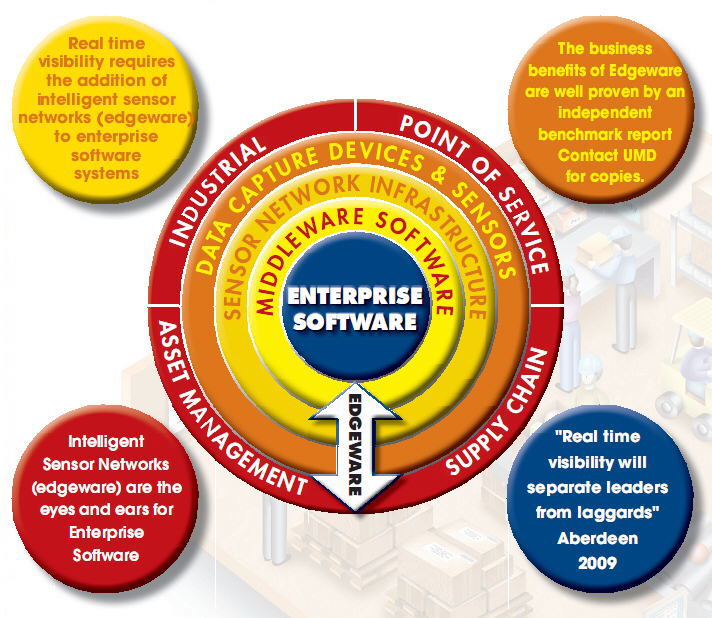Engineering ICT Solutions
in
Edgeware Solutions
- Efficiency: by collecting data where it is generated.
- Effectiveness: reducing errors and mistakes resulting from poor quality information
- Empowerment: of people to do more with access to accurate real time data
- Ease: Edgeware reduces the burden on IT resources and bottlenecks.
- Designing and modifying electronic terminal products
- Selecting and integrating terminals from an extensive range of agency products
- Supporting through professional, engineering, software and support services.
- Collecting data from where it is it generated
- Visualising or displaying this data (independently of the enterprise system) to gain visibility
- Analysing this data to see what is going on (eg. identify bottle necks)
- Automate this analysis, where possible, by developing optimisation programs.
- Integrate this data into the Enterprise System.
What Is "Edgeware"Edgeware is the next evolutionary step for computer applications in extending the reach of Enterprise Systems (such as ERP/MRP). Edgeware represents the hardware and Middleware Software that extends these systems to the physical world at the “edge” of the enterprise where logistical and environmental monitoring and control occur.  Data Capture Devices and Sensors typically include Radio Frequency Identification (RFID) readers and tags, barcode readers, temperature sensors, proximity sensors, annunciators and controlling actuators. Enterprise Systems typically do not have the capability to communicate with data capture devices, nor the intelligence to pre-process their data. In these cases, middleware, as part of an Edgeware solution, will generally be added to provide the necessary interfaces and control to manage devices, collect and process data and collaborate with other systems. As Edgeware and Enterprise Systems become more sophisticated and integrated the next evolutionary phase of edgeware development will emerge: intelligence. Systems will evolve to sense our movements and demands, anticipate our needs, adjust our supply and communicate our instructions automatically. The Value of "Edgeware"A major cost to business operations is in the activity of people in the outer circle covering Point of Service, Supply Chain, Asset Management and Industrial Applications . Connecting people and activities in the physical world to your existing Enterprise System gives you real time visibility. The overwhelming trend in ICT systems today, regardless of industry, is to provide real time visibility of logistical processes and assets. In order to achieve this, “sensors” need to be added to software, to provide it with “eyes” and “ears”. A key feature of sensor networks is that they are automated. You do not have to “tell” the enterprise system that you have moved a pallet or asset, the “sensors” can see that you have done this, and can therefore trigger the next process or event automatically. This results in potential savings in: UMD CredentialsDue to the growing complexity of “edgeware” and integration issues, specialised skills are required to collect, manage and interface data between terminal devices and the enterprise software application. Much of this work requires unique knowledge and capabilities relating to business processes, integration, terminal devices, protocols, interfacing, networking, wireless, physics and electronics. Such skills are represented by UMD’s engineering ICT solutions capability statement, which UMD defines as its ability to fulfill customer specific needs by: Our MethodologyUMD has developed a five step process for edgeware implementation, which is based on working from the outside of the system’s edge (data capture points), to the inside (where enterprise software is interfaced).We do this by implementing the following steps: A key outcome of this approach is that results can be achieved quickly by implementing the first 3 to 4 stages above, without any integration into the enterprise system. This allows the enterprise software integration to be done independently without interference.
Get the "edge", contact UMD today! |

